Australian Tropical Rainforest Plants - Online edition
Syzygium velarum B.Hyland

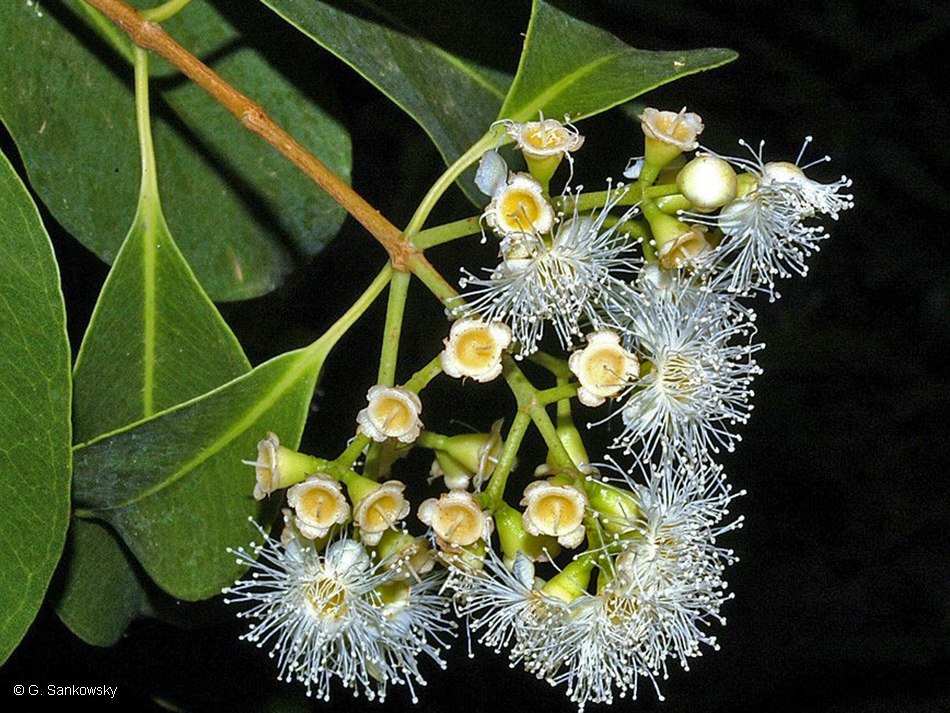
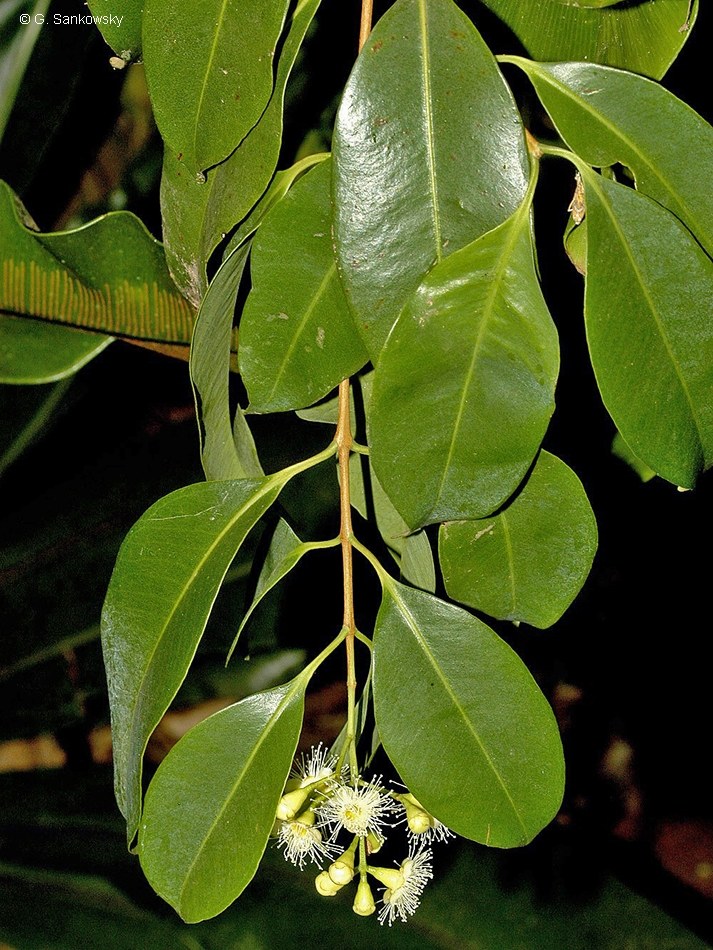
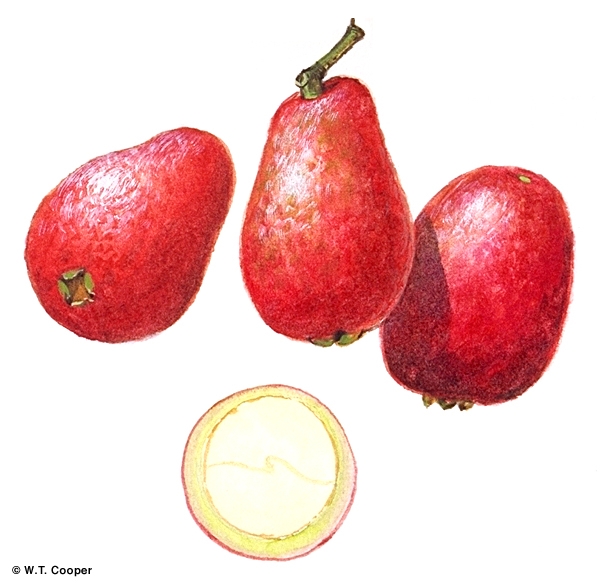

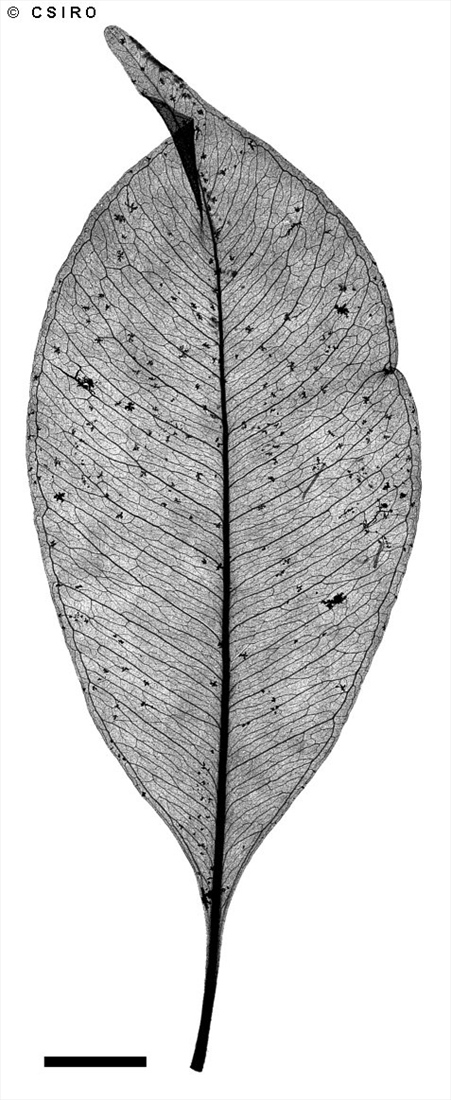
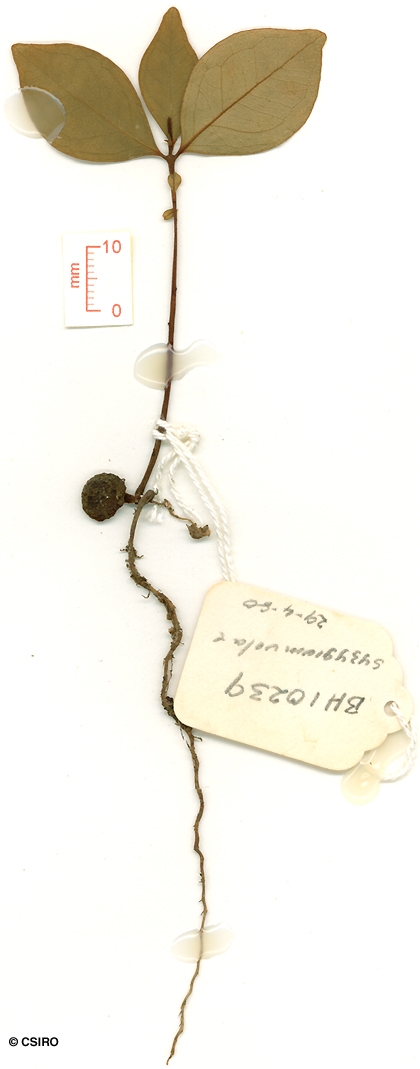


Hyland, B.P.M. (1983) Australian Journal of Botany Supplementary Series 9: 130. Type: I. Vela, Bamaga, xii.1979 (holotypus QRS).
Sections of bark included in the wood.
Bracts deciduous, absent at anthesis. Calyx tube (hypanthium) + pedicel about 5-6 mm long, calyx tube (hypanthium) about 3-4.5 mm diam., calyx lobes dimorphic, rounded, often appearing triangular because of the incurved margins at anthesis, about 1-2 mm long. Petals +/- orbicular but truncate at the base, about 3-4 mm diam., oil dots numerous, more than 100 per petal. Outer staminal filaments about 5-8 mm long, glandular, anthers about 0.7 x 0.5 mm, gland terminal, near the back of the anther. Ovules about 8-12 per locule, placentas axile, ovules radiating, ascending. Style about 3-4.5 mm long, generally shorter than the stamens.
Fruits obovate or ovoid, about 25-40 x 20-30 mm, pericarp succulent, oil glands present, close to the epidermis, calyx lobes persistent, about 1-2 mm long. Seed solitary, transversely oblong, about 15-20 x 10-18 mm, testa adhering slightly to the pericarp and to the rugose, uniformly textured surface of the cotyledons. Cotyledons with numerous oil dots near the surface, stipules present, but inconspicuous. Radicle lateral.
Endemic to CYP, restricted to a small area between Bamaga and Cape York. Altitudinal range from near sea level to 60 m. Grows in drier, more seasonal rain forest and monsoon forest.
Although this species grows to a moderate-sized, well formed tree, the timber has no commercial value because of lenses of included bark. Wood specific gravity 0.90. The fruits may be classed as edible but are not particularly palatable and are of no commercial interest. Hyland (9183).





